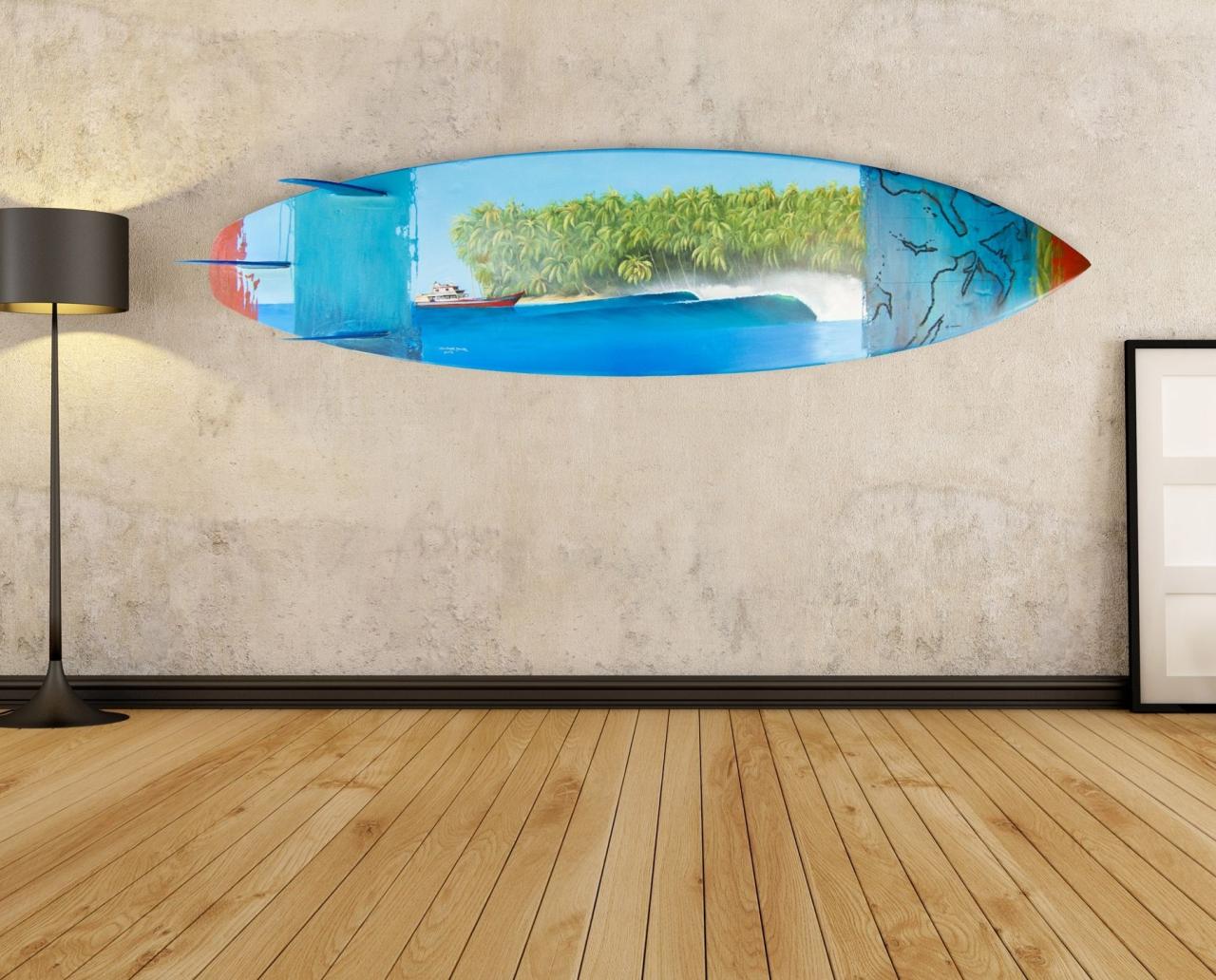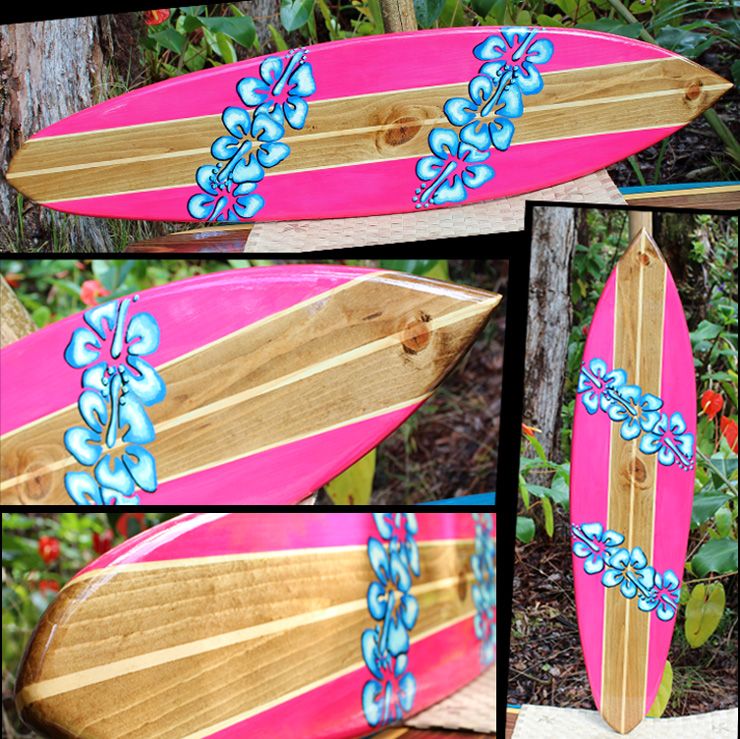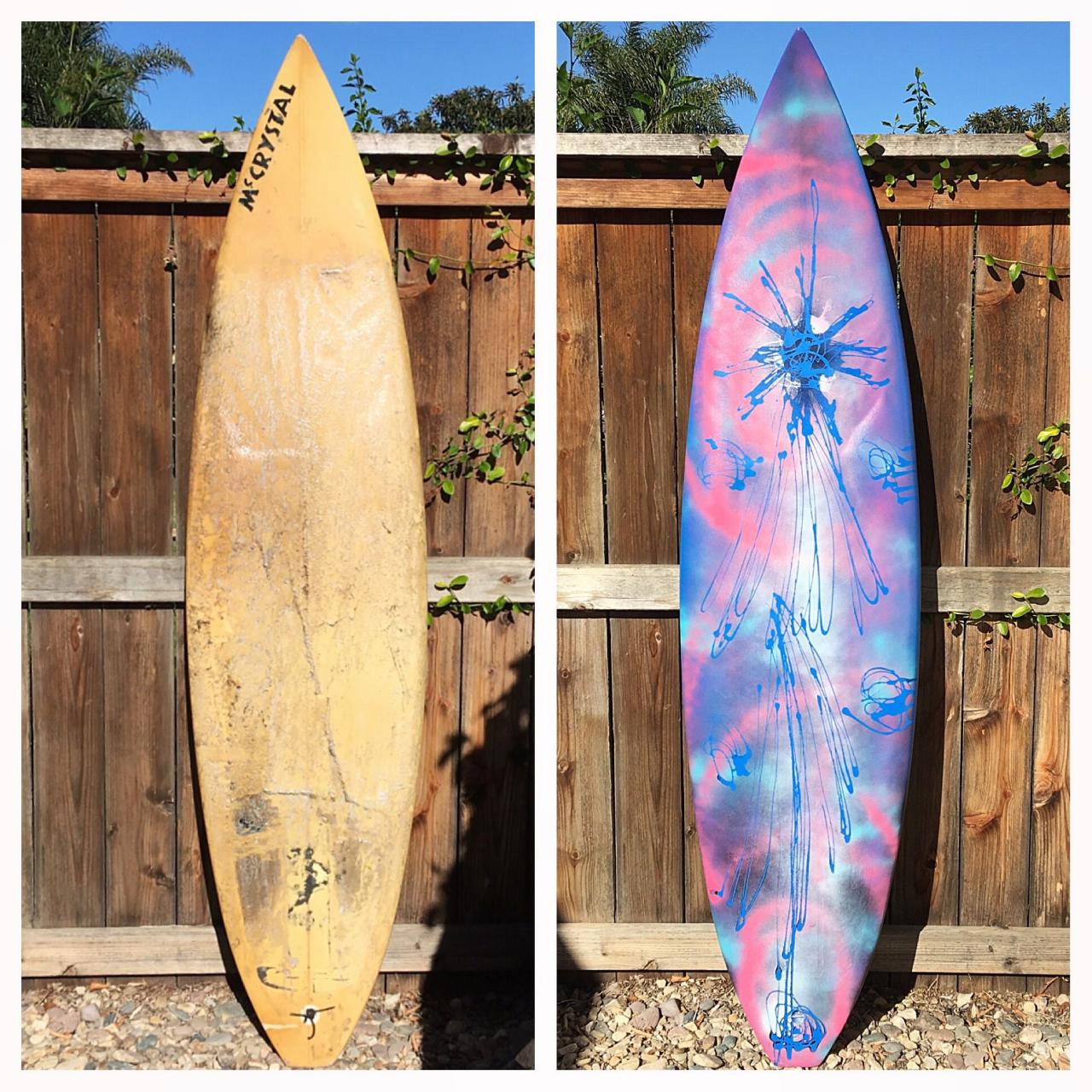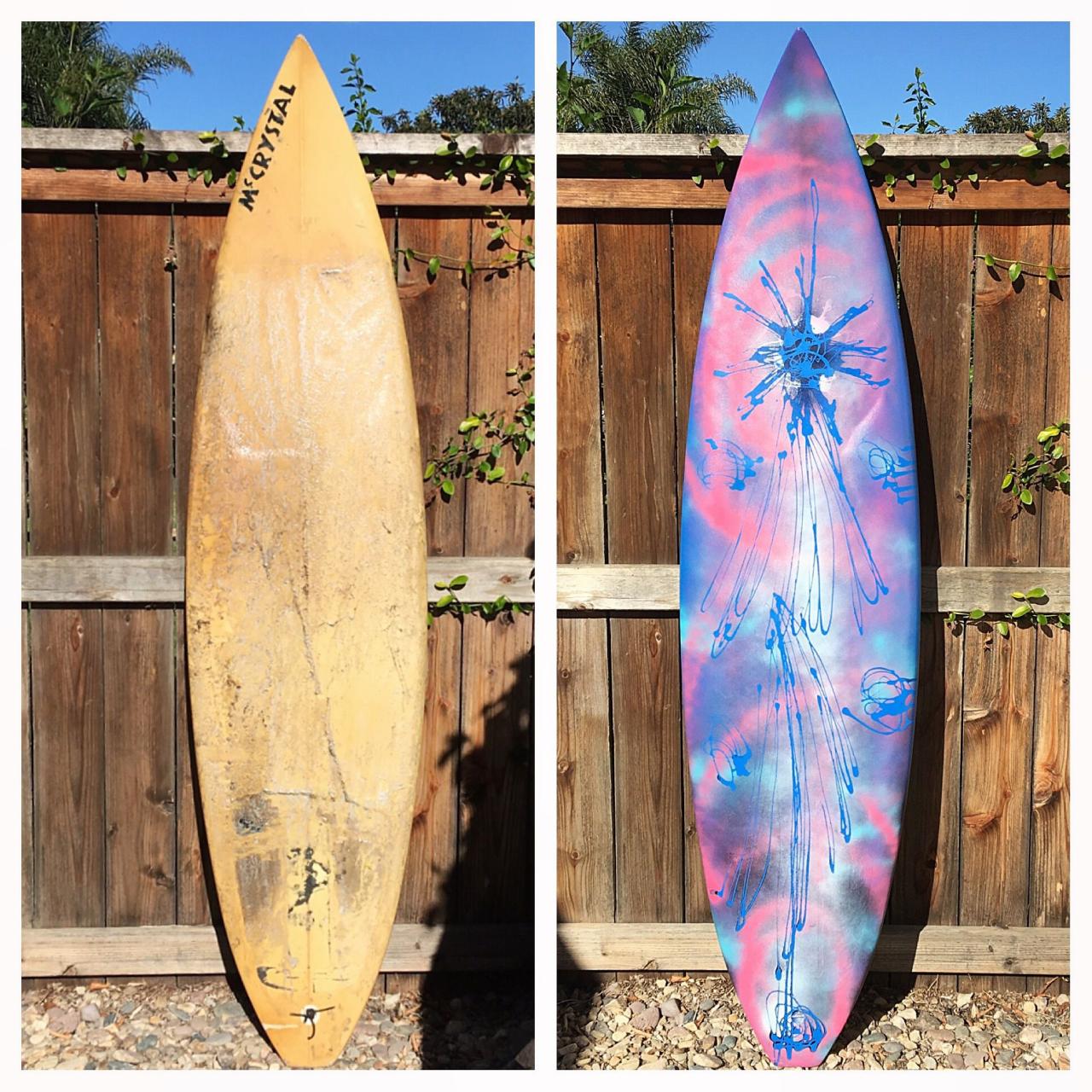Decorative surfboards, with their captivating designs and artistic flair, transcend their original purpose of riding waves and become captivating works of art. Their history, diverse types, and intricate craftsmanship make them both a visual feast and a fascinating subject to explore.
From traditional Hawaiian designs to contemporary abstract patterns, decorative surfboards reflect the creativity and cultural influences of their makers. They adorn homes, businesses, and public spaces, adding a touch of coastal charm and a unique conversation starter.
Introduction
Definition
A decorative surfboard is a surfboard that is designed primarily for display or aesthetic purposes rather than for surfing.
Purpose
Decorative surfboards are often used as wall art, home decor, or collectible items. They can be made from a variety of materials, including wood, fiberglass, and resin.
History
The history of decorative surfboards can be traced back to the early days of surfing. In the 1950s and 1960s, surfers began to experiment with different designs and materials for their surfboards. Some of these boards were so beautiful that they were displayed in homes and galleries.
Today, decorative surfboards are a popular form of art and collectible items.
Types of Decorative Surfboards

Decorative surfboards are surfboards that are designed for display rather than for surfing. They come in a variety of styles and can be made from a variety of materials. Some of the most common types of decorative surfboards include:
- Vintage surfboards:These surfboards are made to look like the surfboards that were popular in the past. They often have classic designs and are made from traditional materials like wood or fiberglass.
- Art surfboards:These surfboards are designed to be works of art. They often feature unique and intricate designs and are made from a variety of materials, including wood, fiberglass, and even metal.
- Replica surfboards:These surfboards are made to look like the surfboards that were used by famous surfers. They often feature the same design and materials as the original surfboards.
- Custom surfboards:These surfboards are made to order and can be designed to the customer’s specifications. They can be made from a variety of materials and can feature any design the customer wants.
Decorative surfboards can be a great way to add a touch of style to your home or office. They can also be a great conversation starter. If you are looking for a unique and stylish way to decorate your space, a decorative surfboard is a great option.
Design Elements of Decorative Surfboards
Decorative surfboards often incorporate various design elements to enhance their aesthetic appeal. These elements can range from traditional motifs to contemporary patterns, and their impact on the overall look of the surfboard is significant.
Design elements can be classified into several categories, each contributing to the unique character of the surfboard.
Patterns, Decorative surfboard
Patterns are a fundamental design element used on decorative surfboards. They can be simple or intricate, geometric or organic, and often draw inspiration from different cultures and art forms. Common patterns include stripes, checkers, zigzags, tribal motifs, and floral designs.
- Stripes: Parallel lines that create a sense of movement and rhythm.
- Checkers: Squares or rectangles arranged in a grid pattern.
- Zigzags: Angular lines that create a dynamic and energetic effect.
- Tribal motifs: Patterns inspired by the art and traditions of indigenous cultures.
- Floral designs: Patterns featuring flowers, leaves, and other botanical elements.
Graphics
Graphics are another important design element, often used to depict specific images or themes. They can be hand-painted, printed, or carved into the surfboard’s surface. Common graphics include landscapes, seascapes, animals, and abstract designs.
- Landscapes: Depictions of natural scenes, such as beaches, mountains, or forests.
- Seascapes: Images of the ocean, waves, or marine life.
- Animals: Representations of various animals, both real and mythical.
- Abstract designs: Non-representational patterns or shapes that evoke emotions or create visual interest.
Color
Color plays a crucial role in the overall design of a decorative surfboard. It can be used to create a wide range of effects, from bold and vibrant to subtle and understated. Color combinations can evoke specific moods or associations, and can also be used to highlight certain design elements.
- Bright colors: Bold and eye-catching hues that create a sense of energy and excitement.
- Pastel colors: Soft and muted shades that create a more calming and serene effect.
- Monochromatic color schemes: Using different shades of the same color to create a cohesive and sophisticated look.
- Complementary color schemes: Using colors that are opposite each other on the color wheel to create a sense of contrast and visual impact.
Care and Maintenance of Decorative Surfboards

Decorative surfboards are not only beautiful but also valuable pieces that require proper care and maintenance to ensure their longevity. Neglecting their upkeep can diminish their aesthetic appeal, functionality, and lifespan.
Storage
Store decorative surfboards in a dry, well-ventilated area, away from direct sunlight and moisture. Exposure to extreme temperatures or humidity can warp the board or damage its finish.
Cleaning
Clean decorative surfboards regularly using a mild detergent and water. Avoid harsh chemicals or abrasive cleaners, as they can damage the finish. Rinse thoroughly with clean water and dry with a soft cloth.
Repair
If your decorative surfboard sustains any damage, it’s important to repair it promptly to prevent further deterioration. Minor scratches or dents can be repaired using a surfboard repair kit. For more significant damage, consult a professional surfboard repairer.
Importance of Proper Care
Proper care and maintenance of decorative surfboards is crucial for several reasons:
- Preserves the beauty and value of the surfboard
- Extends its lifespan
- Ensures the board remains structurally sound and functional
- Protects against damage caused by environmental factors
Conclusion

In conclusion, decorative surfboards offer a unique and visually stunning way to express oneself and connect with the ocean. Their popularity has grown exponentially, with artists and designers constantly pushing the boundaries of creativity and craftsmanship. Whether you are a surfer, art enthusiast, or simply appreciate the beauty of the ocean, decorative surfboards are a captivating art form that deserves recognition and appreciation.
The importance of decorative surfboards cannot be overstated. They not only serve as functional pieces of art but also represent a deep connection to the ocean and surfing culture. They allow individuals to express their creativity, showcase their individuality, and create a personal connection with the waves.
Furthermore, decorative surfboards contribute to the preservation of traditional surfing techniques and inspire future generations of surfers and artists alike.
Call to Action
If you are interested in learning more about decorative surfboards, there are numerous resources available online and in local surf shops. You can explore the works of renowned surfboard artists, attend exhibitions, or even commission a custom-made surfboard that reflects your unique style and personality.
Embrace the beauty and artistry of decorative surfboards and become a part of this vibrant and ever-evolving art form.
Final Review
Decorative surfboards are not just objects of beauty; they are a testament to the artistry and craftsmanship that can transform a functional item into a captivating masterpiece. Whether displayed as a statement piece or used as a functional art form, these surfboards bring a touch of the ocean’s allure into our everyday lives.
Question Bank
What are the most popular types of decorative surfboards?
Decorative surfboards come in various types, including traditional Hawaiian designs, abstract patterns, and photo-realistic prints.
What materials are used to make decorative surfboards?
Decorative surfboards can be made from a range of materials, such as wood, fiberglass, and epoxy resin.
How can I care for my decorative surfboard?
To maintain the beauty of your decorative surfboard, store it in a dry and shaded area, clean it regularly with a mild soap solution, and avoid exposing it to extreme temperatures.

